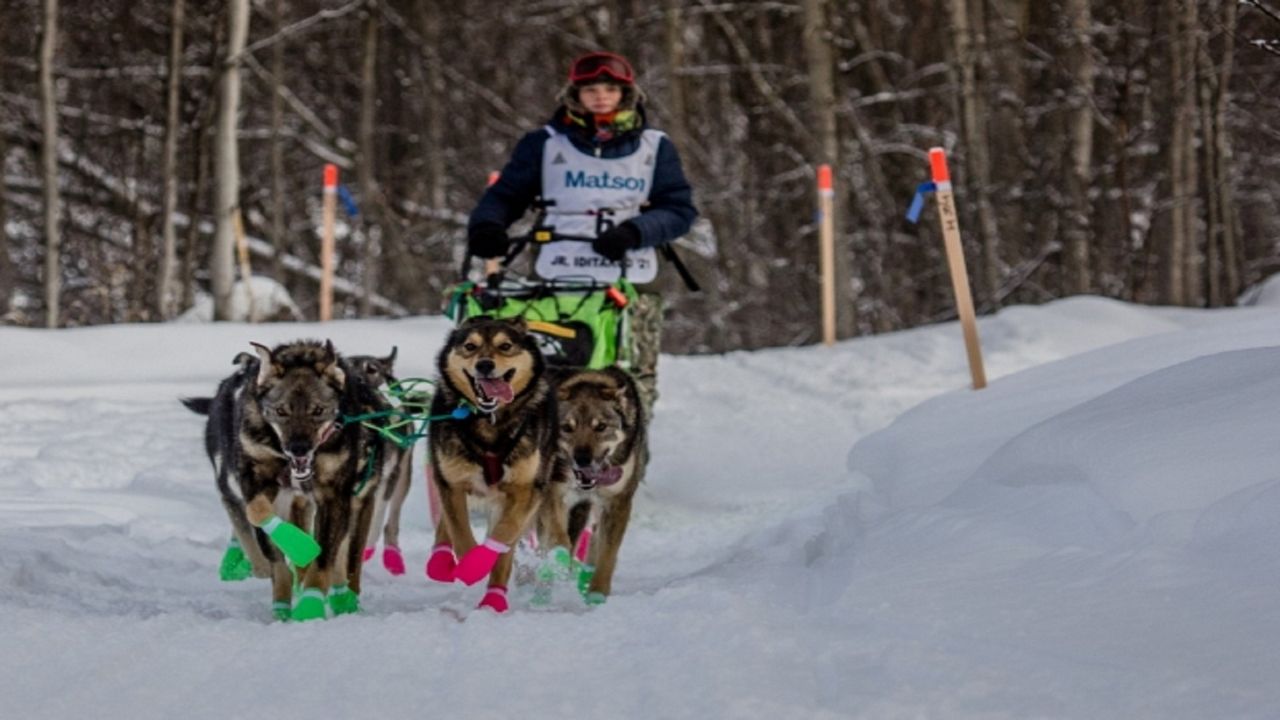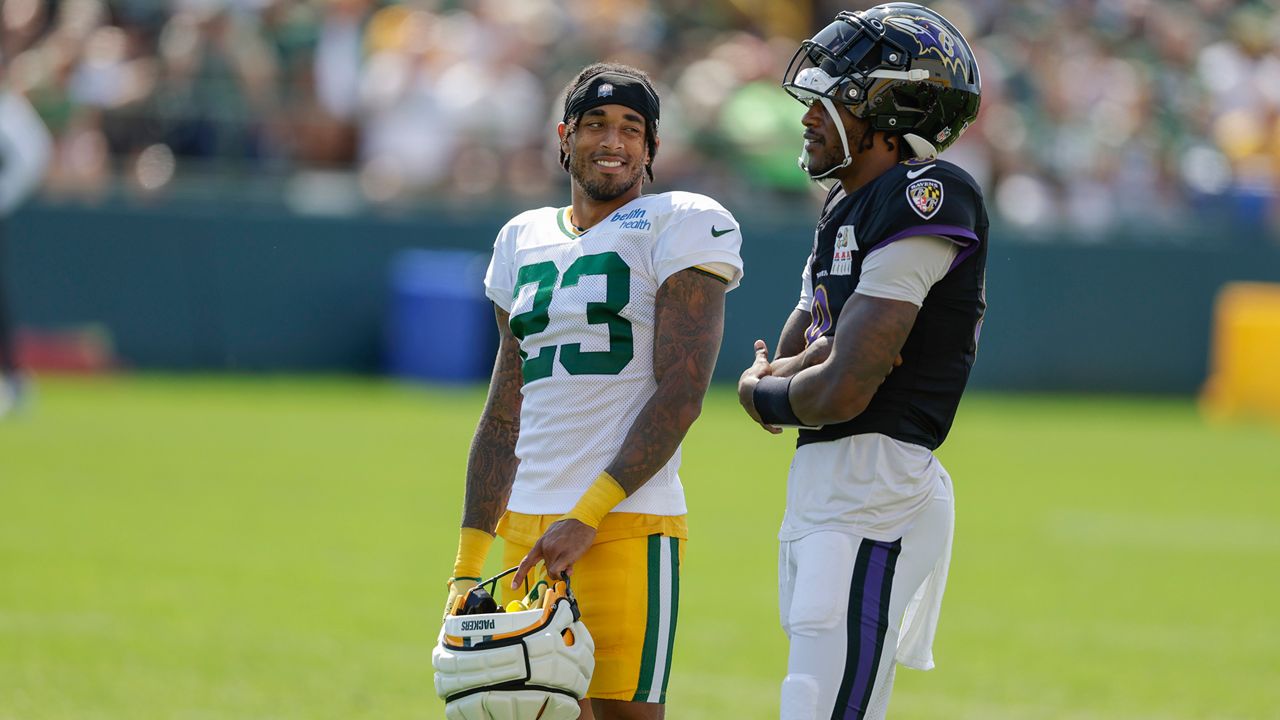The performance of the welcoming committee was sub-par. In fact, it stunk.
Morgan Martens was at the starting line for his first Junior Iditarod Sled Dog Race when Mother Nature thought it was a good time for his welcome-to-Alaska moment in the form of a 5.3 magnitude earthquake.
The nerve of that woman.
“It made your knees buckle,’’ said Martens, an eighth-grader from Brule, Wis. “You could feel it shake the ground. I thought the ice cracked at first, but it was an earthquake.’’
And if you think that made Martens’ nerves a tad more frayed…
“My mom (Janet) was very nervous,’’ he said. “Her stress levels were on the high.’’
But a few minutes later, the nerves were replaced by adrenaline as Martens and his team of 10 dogs embarked on a 150-mile journey through the Alaskan wilderness.
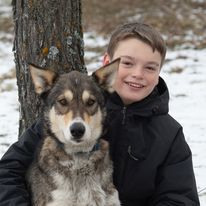
This was his first Junior Iditarod, and he was the only musher outside of Alaska taking part.
“I didn’t really have any expectations,’’ he said. “There were a lot of good teams in that race.’’
And as he would learn hours later, mushers can face an array of obstacles, including one that can make an earthquake feel like a gentle breeze.
****
Janet Martens’ love for mushing began when two stray huskies showed up on her doorstep.
“That was the start of my team,’’ she said.
She actually was introduced to the sport years earlier when she worked as a public health nurse in Alaska’s bush country, so when the two dogs showed up on her porch it made for an easy decision.
“I figured they needed a good home and we have some acreage here in Wisconsin, and I decided we have plenty of space, and my husband (Tim) wasn’t opposed so we took them in,’’ she said. “And then people started giving me their old dogs.’’
Then she started training them.
“We didn’t go very far or very fast, but it was a lot of fun and I really enjoyed it,’’ she said. “So, as time went on, I think, we had about eight of the older dogs. That’s how I got hooked.’’
When her daughter, Talia, was born she had her on the back of a race sled before she turned one. For Morgan, it was much the same.
Now the Martens own and train 20 dogs on their 200-acre property.
“Well, it’s kind of like having a dairy farm,’’ she said. “We are out there twice a day at least checking on all the dogs, petting them, feeding them, loving them and, of course, cleaning up after them. So the kids know the dogs are depending on them and they are depending on the dogs, so it’s a good bonding experience with their team.
“And the dogs know who takes care of them and when that person is training them, they want to please the musher and it’s a vice-versa relationship. Everybody works together, the mushers, the coach. But it’s a lot of discipline and getting up 5 in the morning before school, kind of like the dairy farmers do. They’re committed.”
And this commitment stretches far beyond just remembering their names.
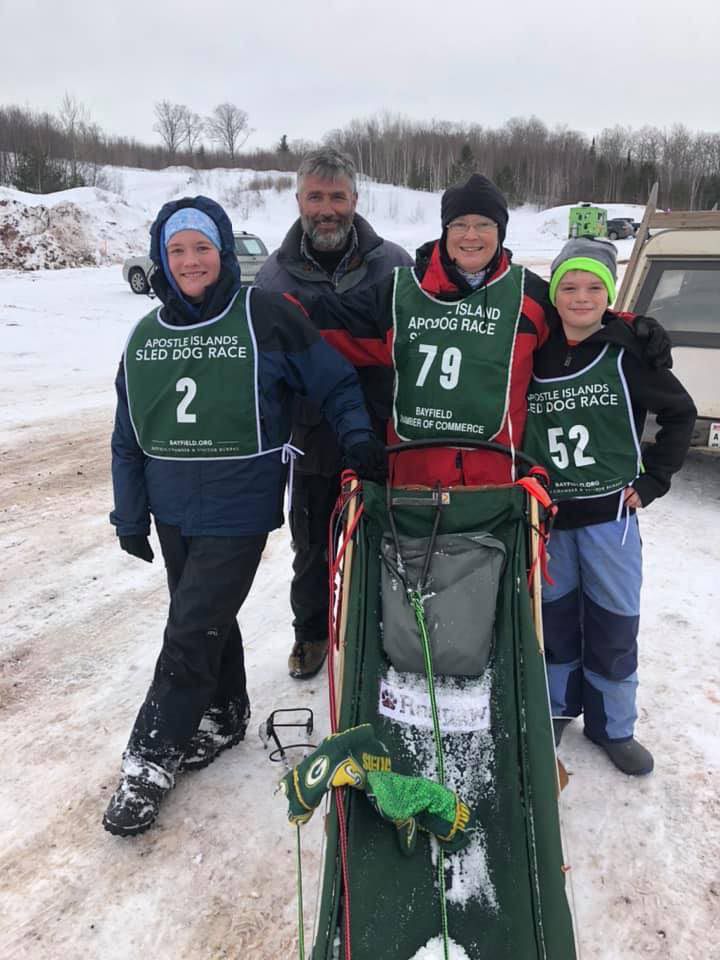
“We know what they like, where they liked to be rubbed and scratched, we know which dogs like the other dogs, what dogs have an argument with their worst enemy out there, we know which dogs like to run on the right side versus the left side. Yeah, we know all their idiosyncrasies,’’ she said.
While the dogs are being trained to race, the Martens also like to share them with the local community, giving sled dogs rides to people in the area from other countries, as well as 4H groups and the Girl Scouts.
“We’re not in this for the business, but we like to share the dogs and the dogs love the kids,’’ she said. “We have people who have adopted children from overseas that are trying to get their kids, like perhaps they’re fearful of dogs because of their childhood experiences, so we help desensitize the kids and their fear of dogs and just getting different people outside is real important to us.’’
****
When Ryan Redington needed a place for him and his dogs to stay this winter, he called on the Martens, whom he’d met years ago through mushing.
For Morgan Martens, that changed everything.
He would watch how Redington fed his dogs, how he hooked them up and how he trained them. He would regularly go on training runs with him and, when finished, would come home and drive his own team, applying the knowledge and wisdom he just gleaned from the grandson of the man who started the Iditarod.
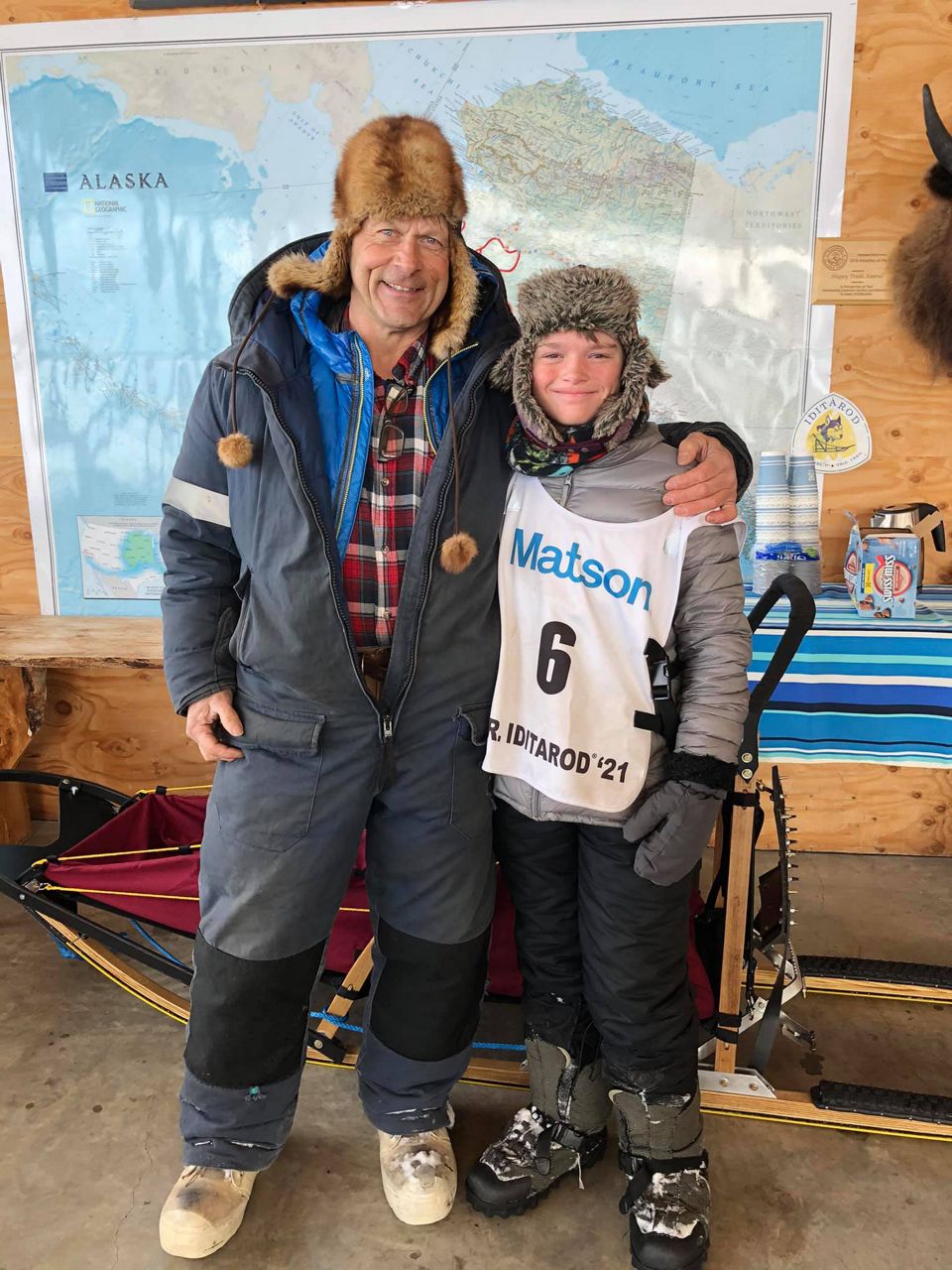
While Martens watched Redington’s every move, Redington was doing the same with Martens.
“His connection with the dogs, and his eagerness to help and watch my dogs run and train, I thought it would be nice to reward him for helping me by racing in the Junior Iditarod if he wanted to,’’ said Redington.
The deal was Martens would use Redington’s dogs in the race, helping significantly reduce the cost of the trip, and also give the young musher a veteran presence of sorts to rely on in his new four-legged friends.
“It was extremely important,’’ said Janet Martens. “Morgan would never have considered running in Alaska a dog team without Ryan motivating him.’’
****
The wind was gusting at 25 mph. The snow began to form drifts on the trail up to three feet high, and this annoyance of nature would continue on for some 25 miles over an open swamp and put to the test the mental and physical abilities of 14-year-old Morgan Martens and his dogs.
Then, just ahead in the forest, the trees that had fallen on the trail because of those same winds provided yet another test.
“I also saw a cow (female moose) and a calf moose,’’ said Martens. “I came up behind them and I spooked them.”
And this was the pop quiz every musher fears.
“Moose, you can’t overestimate the damage they can do to a dog team,’’ said Dallas Seavey, who this year became only the second five-time Iditarod champion. “They are large and they are very well-equipped to fend off packs of wolves that are not tied together. They are late in the winter. They are defensive in nature because they are weakened and depleted after trying to survive a very harsh Alaskan winter and they’re not prone to turn around and try and run away. Especially in deep snow; they simply can’t run. So their instinct is to turn and fight.’’
Martens had heard the horror stories, how a moose would charge a team, get tangled in the gangline and kick and kill the dogs. And he was all alone, noting the closest person to him was about 10 miles away.
“I can absolutely sympathize with the terror of musher experiences when they have their team of best friends in a very vulnerable position,’’ said Seavey. “The dogs don’t recognize the danger necessarily and are working against us. They want to run up and see what the moose is doing and we’re doing everything we can to keep them away from the moose. So, that’s a terrifying situation and it’s something to be overcome, especially for a younger musher that may not have a handgun, or an option to kill the moose if necessary. It’s very, very scary. And it’s a serious situation.”
As the stare down continued between the moose and Martens and his dogs, he said his heart was beating like never before.
“But the moose just kind of ran away,’’ he said. “It was protective of its calf, it stood its ground, but it kind of just wandered off after a little bit.”“But the moose just kind of ran away,’’ he said. “It was protective of its calf, it stood its ground, but it kind of just wandered off after a little bit.”
Martens left the last of three race checkpoints in the lead and never gave it up, coming in first in just over 27 hours (there was a required 10-hour layover at the halfway mark), a half-hour ahead of his closest competitor.
“He was a rock star out there,’’ said Redington. “I’m very happy with his performance and how happy he was throughout the race. When he came in he was smiling and looked like he could continue on racing. He had a great time, and sure there were obstacles and it was a long race for him, but he seemed to thrive in it.”
****
Upon his return to Brule, the Martens went by Morgan’s school and, as they did, the doors burst open and children flooded outside.
“It just about made me cry,’’ said Janet. “It was such an emotional experience. Sixth-,seventh-, and eighth-graders, and the school principal had them all outside and they weren’t just cheering, they were screaming at the top of their lungs when we drove by.
“It was very cool because Morgan hasn’t been to school at all this year, but they all remembered him and were supporting him. So that was something.”
So was the $6,000 scholarship Morgan received for winning the race and the fact he will now get to be the honorary starter for the 2022 Iditarod.
Both Morgan and Talia, who finished ninth in the 2018 Junior Iditarod with her family’s team of dogs, want to continue to pursue mushing. But sponsorships in that part of Wisconsin are limited and the cost is considerable – around $60,000 just for the Iditarod race itself, where Morgan has to be 18 to be eligible to participate.
“We mostly take it one day at a time,’’ said Janet. “Both kids have expressed an interest in continuing racing and we’re going to feed that interest, but we have to keep it in a comfortable situation because of the finances. We get a lot of help from the local butcher, the dogs love to eat raw meat, so we get a lot of free food, but then keeping up with all the bills for the dogs is a challenge. So we’ll go as far as we can to the limits of our ability and take just one day at a time.”
After this experience, Morgan hopes to one day crack at the 1,000-mile Iditarod.
“It definitely would be a life experience,’’ he said, “Once-in-a-lifetime.”
Story idea? Contact Mike Woods at 920-246-6321 or at: michael.t.woods1@charter.com.





